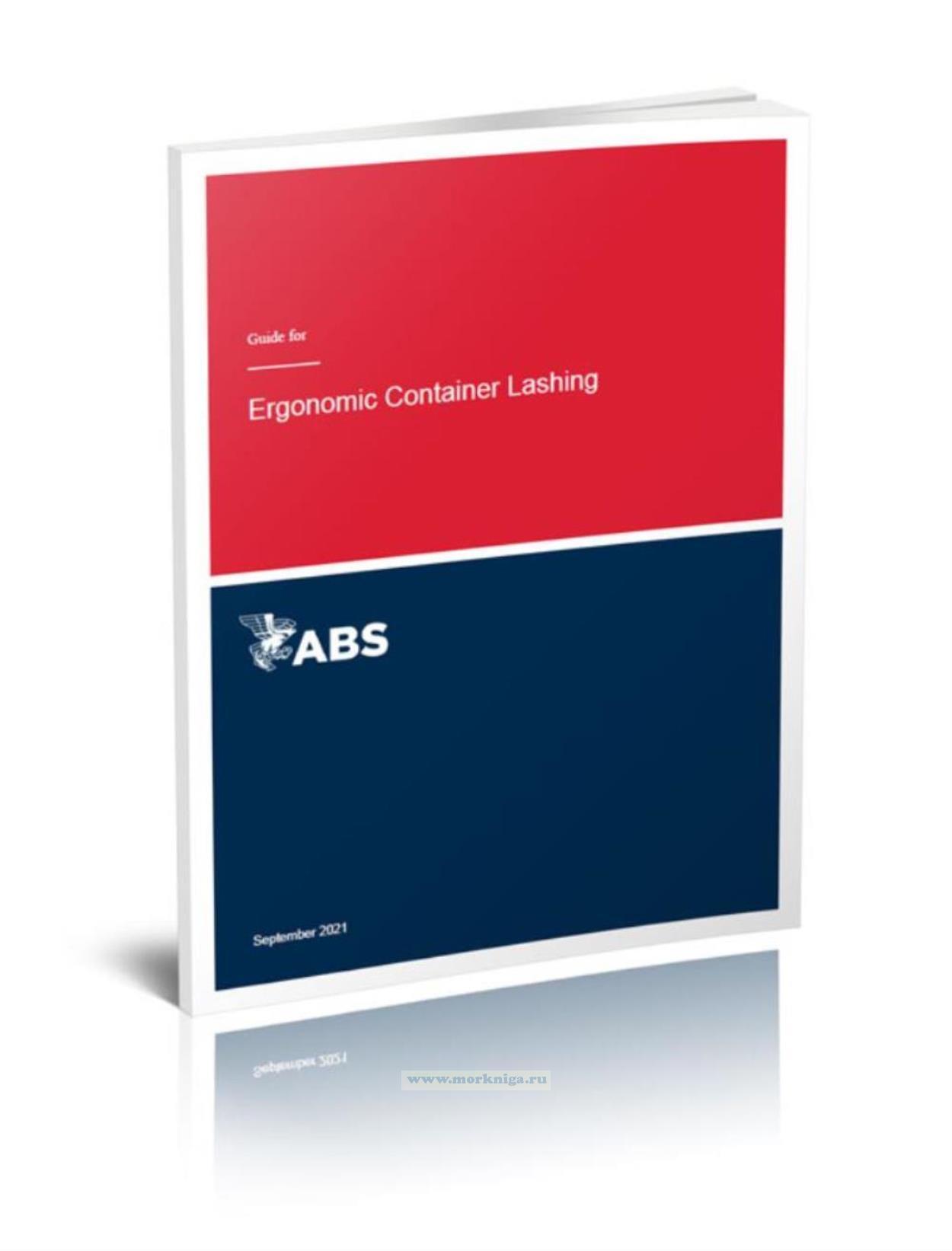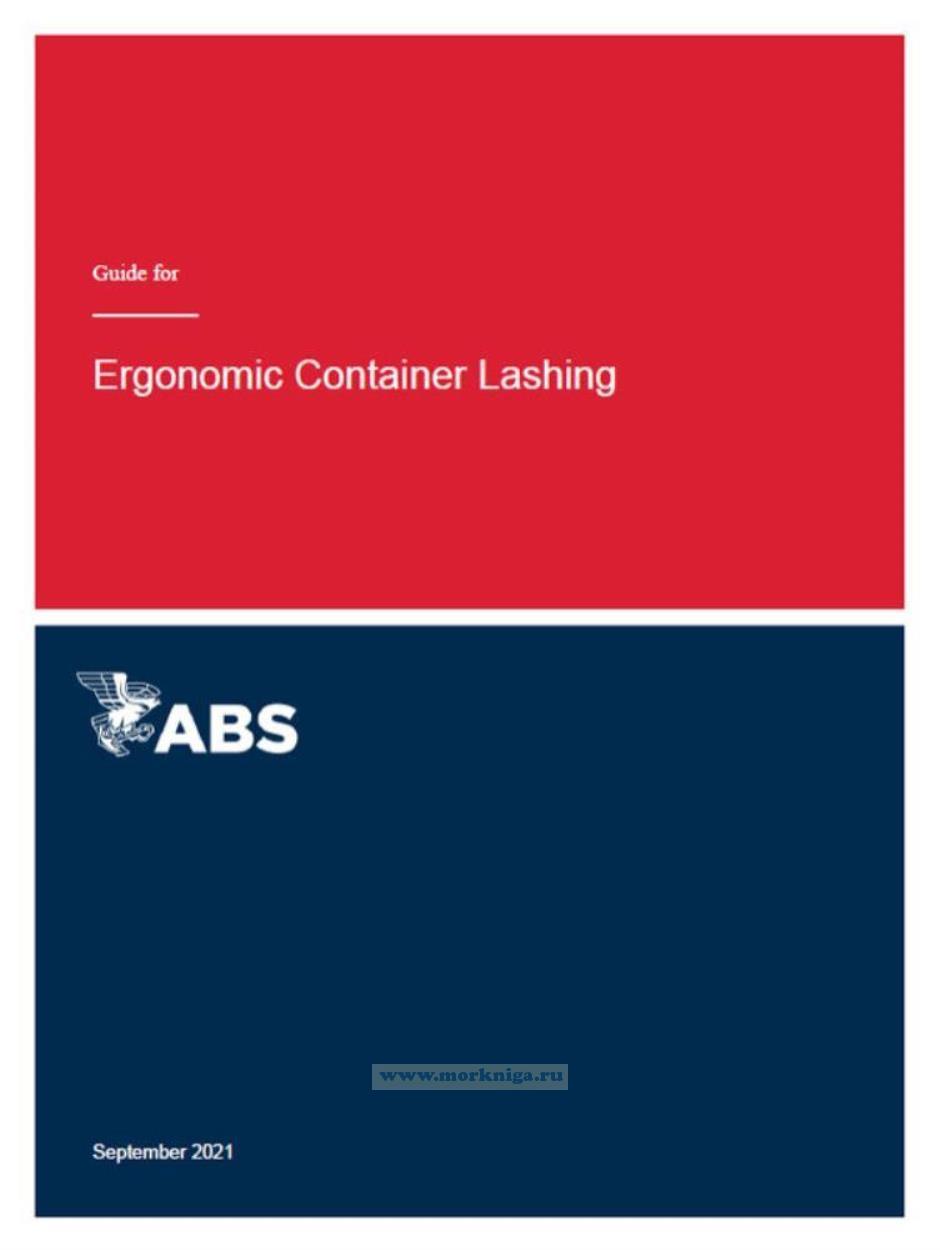Guide for Ergonomic Container Lashing/Эргономичное крепление контейнеров. Руководство
Книга на английском языке
Ergonomics is defined as “the scientific discipline concerned with the understanding of interactions amonghumans and other elements of a system, and the profession that applies theory, principles, data, andmethods to design in order to optimize human well-being and overall system performance” (InternationalErgonomics Association, 2011).Container lashing is a strenuous, high risk, and dangerous activity. During lashing and unlashing activities,containers are secured to the ship by means of lashing rods, turnbuckles, twist-locks, and other lashingequipment. Lashing equipment limits container movement, and prevents containers from falling overboard.The purpose of the ABS Guide and the associated notations is to provide the marine containertransportation industry with guidance on the design of a more ergonomic working environment.
Contents
Section 1 General
1 Introduction
2 Application and Scope
3 Terminology
4 Notations
4.1 ERGO(LASH)-R Notation
4.2 ERGO(LASH) Notation
5 Documentation
5.1 Risk Assessment
5.2 Design Requirements
5.3 Results
6 Process for Obtaining a Notation
7 Alternatives
7.1 General
7.2 Other Regulations
7.3 Departures from Criteria
Section 2 Requirements for Notation
1 Introduction
2 Risk Assessment Requirements
2.1 List the Job Steps
2.2 Identify Hazards Associated with Each Job Step
2.3 Identify Existing Control Measures for Each Hazard
2.4 Performing Risk Analysis and Risk Evaluation
3 Design Requirements
3.1 General Provisions
3.2 Lashing Position Design (Platforms, Bridges and other Lashing Positions)
3.3 Fencing Design
3.4 Ladder and Manhole Design
3.5 Lashing Equipment Design
3.6 Lighting Design
3.7 Specialized (Reefer) Container Safety Design
Table 1 General Provisions
Table 2 Lashing Position Design
Table 3 Fencing Design
Table 4 Ladder and Manhole Design
Table 5 Lashing Equipment Design
Table 6 Reefer Container Safety Design
Figure 1 Sample Risk Matrix with Risk Tolerability Criteria
Figure 2 Work Area Between Container Stacks
Figure 3 Lashing Bridge
Figure 4 Lashing Platforms on Outboard Stanchions
Figure 5 Work Area Between Hatch Covers
Figure 6 Fencing Dimensions
Figure 7 Ladder Dimensions
Figure 8 Ladder Access from the Outside of the Lashing Platform
Figure 9 Ladder Access through the Lashing Platform
Figure 10 Lashing Platform Manhole Dimensions
Figure 11 Vertical Ladder Guard Hoops (Ladder Length ? 3 m (10 ft))
Section 3 Survey Requirements
1 General
2 Initial Survey During Construction (ERGO(LASH))
3 Surveys After Construction (ERGO(LASH)-R and ERGO(LASH))
3.1 Initial Survey for Existing Vessels Obtaining the ERGO(LASH)-R Notation
3.2 Initial Survey for Existing Vessels Obtaining the ERGO(LASH) Notation
3.3 Annual Surveys
3.4 Special Periodical Surveys (ERGO(LASH))
3.5 Requirements for Vessel Alterations
Appendix 1 References
Appendix 2 Risk Assessment Form Template

